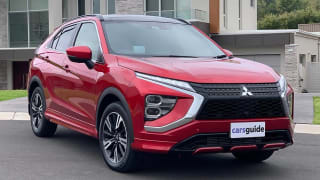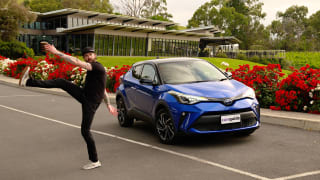Price is a bit of a funny topic here, because when the CX-30 launched Mazda was talked about as though it was suddenly going ‘upmarket’. With its rivals seemingly forced into a string of price rises though, the gap between the CX-30 and key alternatives has significantly narrowed.
Wearing an MSRP of $30,390, this entry-level Pure automatic is now on-par with its rivals, which in this specific small SUV shape currently include the Toyota C-HR GXL ($30,915), Volkswagen T-Roc 110TSI Style ($35,500), and the Mitsubishi Eclipse Cross ES ($30,990).
Mazda, perhaps owing to its lofty ambitions on other CX-30 grades, has packed the Pure with a particularly odd array of standard equipment. For a base model it has an impressive 8.8-inch multimedia screen, push-start ignition, and even a holographic head-up display, but doesn’t include traditionally basic items at this price like dual-zone climate control or even the convenience of keyless entry.

Expected base-grade stuff like basic cloth seat trim with manually adjustable front seats is there alongside small 16-inch alloy wheels, but then again, there’s also lovely synthetic leather trim for the steering wheel, door cards, and centre console. The semi-digital dash suite from other CX-30 grades is even included.
It makes this car feel very nice for the price, but the strange set of omissions are clearly designed to encourage you into a higher grade.

On the options front there is only the 'Vision Technology' pack ($1500) which includes some of the omitted safety items, like a 360-degree parking camera, adaptive cruise control, driver attention alert, front cross-traffic alert, and front parking sensors. Two shades of grey and Mazda’s signature 'Soul Red' exterior paint colours also wear a $495 optional price tag.
A lot of what goes into buying a car though is emotion, and I can see why prospective owners would easily be swayed into the CX-30 at this price with its upmarket look and feel compared to, say, an entry-level version of the Mitsubishi Eclipse Cross.























